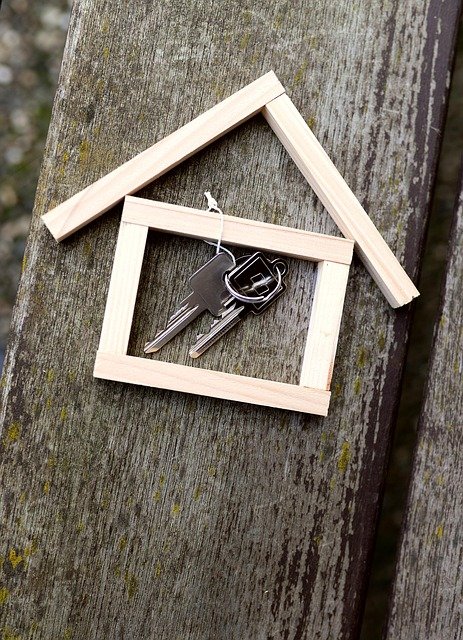Exploring the Benefits of Backyard Apartments in 2025
As urban areas continue to evolve, backyard apartments are gaining traction as a versatile housing solution. These compact living spaces, often referred to as accessory dwelling units (ADUs) or granny flats, are separate structures built on existing residential properties. In 2025, the concept of backyard apartments is expected to play a significant role in addressing housing needs and maximizing property potential.

The concept of backyard apartments has gained significant momentum across the United States, offering homeowners a practical way to maximize their property value while addressing broader housing needs. These secondary dwelling units, constructed on existing residential lots, provide independent living spaces complete with kitchens, bathrooms, and sleeping areas. Whether used for family members, rental income, or personal workspace, backyard apartments represent a versatile solution to modern housing challenges.
What Factors Are Driving the Rising Popularity of Backyard Apartments?
Several interconnected trends have contributed to the surge in backyard apartment construction. Housing affordability remains a primary concern across many metropolitan areas, with traditional home prices outpacing wage growth. Backyard apartments offer a more accessible entry point for renters while providing homeowners with supplemental income streams. Legislative changes have played an equally important role, as numerous states and municipalities have relaxed zoning restrictions that previously prohibited or severely limited ADU construction. California, Oregon, and Washington have led these regulatory reforms, making it easier for property owners to add secondary units without extensive permitting hurdles. Additionally, demographic shifts toward multigenerational living arrangements have increased demand for private yet proximate housing solutions that allow families to maintain independence while staying close.
How Do Backyard Apartments Benefit Homeowners?
The advantages for property owners extend well beyond simple rental income. Backyard apartments can generate consistent monthly revenue that helps offset mortgage payments, property taxes, and maintenance costs. Many homeowners report rental income ranging from several hundred to several thousand dollars monthly, depending on location and unit size. Beyond financial returns, these structures increase overall property values, with studies indicating that homes with ADUs can sell for significantly more than comparable properties without secondary units. Backyard apartments also provide flexible living arrangements for aging parents, adult children, or live-in caregivers, offering privacy while keeping family members nearby. Some homeowners use these spaces as home offices, studios, or guest accommodations, adapting the unit to changing life circumstances without relocating.
What Are the Community Benefits of Integrating Backyard Apartments?
Beyond individual homeowner advantages, backyard apartments contribute positively to neighborhood dynamics and urban planning goals. These units increase housing density without altering neighborhood character, as they blend into existing residential areas rather than requiring new large-scale developments. This approach to densification helps communities accommodate population growth while preserving green spaces and established neighborhood aesthetics. Backyard apartments also promote economic diversity within neighborhoods, allowing residents with varying income levels to live in areas that might otherwise be financially inaccessible. From an environmental perspective, ADUs support sustainable urban development by utilizing existing infrastructure and reducing urban sprawl. They encourage walkable communities where residents can access local services and amenities without lengthy commutes.
What Design Considerations Are Important for Backyard Apartments?
Successful backyard apartment projects require thoughtful planning that balances functionality, aesthetics, and regulatory compliance. Size constraints typically range from 400 to 1,200 square feet, necessitating efficient floor plans that maximize usable space. Open-concept layouts, multifunctional furniture, and strategic storage solutions help small footprints feel spacious and comfortable. Architectural design should complement the main house and surrounding properties, maintaining visual harmony within the neighborhood. Privacy considerations for both the ADU occupants and main house residents influence window placement, entrance locations, and outdoor space configuration. Utility connections for water, electricity, and sewage require careful planning and often represent significant portions of construction budgets. Energy efficiency features such as proper insulation, efficient HVAC systems, and quality windows reduce long-term operating costs while improving occupant comfort.
What Are the Typical Costs Associated with Building a Backyard Apartment?
Construction costs vary considerably based on location, size, design complexity, and whether homeowners choose new construction, garage conversions, or prefabricated units. Understanding these financial considerations helps property owners make informed decisions about their projects.
| Construction Type | Cost Range | Timeline | Key Considerations |
|---|---|---|---|
| New Ground-Up Construction | $150,000 - $400,000 | 6-12 months | Site preparation, foundation, full utilities |
| Garage Conversion | $80,000 - $200,000 | 3-6 months | Existing structure, limited site work |
| Prefabricated Units | $100,000 - $250,000 | 2-4 months | Factory construction, faster installation |
| Detached Studio | $120,000 - $300,000 | 4-8 months | Smaller footprint, simpler design |
Prices, rates, or cost estimates mentioned in this article are based on the latest available information but may change over time. Independent research is advised before making financial decisions.
Beyond base construction costs, homeowners should budget for architectural and engineering fees, permit costs, utility connection fees, and landscaping. Financing options include home equity loans, construction loans, cash-out refinancing, or specialized ADU loan programs offered by some lenders. Many property owners find that rental income allows them to recoup construction costs within five to ten years, though this timeline varies based on local rental markets and construction expenses. Some municipalities offer incentive programs, fee waivers, or expedited permitting for ADU projects that meet specific criteria, such as affordability requirements or sustainable building standards.
Backyard apartments represent a meaningful response to contemporary housing challenges, offering benefits that extend from individual homeowners to entire communities. As regulatory environments continue evolving and construction methods become more efficient, these versatile living spaces will likely play an increasingly important role in residential development strategies. Property owners considering backyard apartments should research local regulations, obtain multiple contractor estimates, and carefully evaluate their specific goals to determine whether an ADU aligns with their financial and lifestyle objectives. With proper planning and execution, backyard apartments can enhance property value, generate income, and provide flexible housing solutions for years to come.




